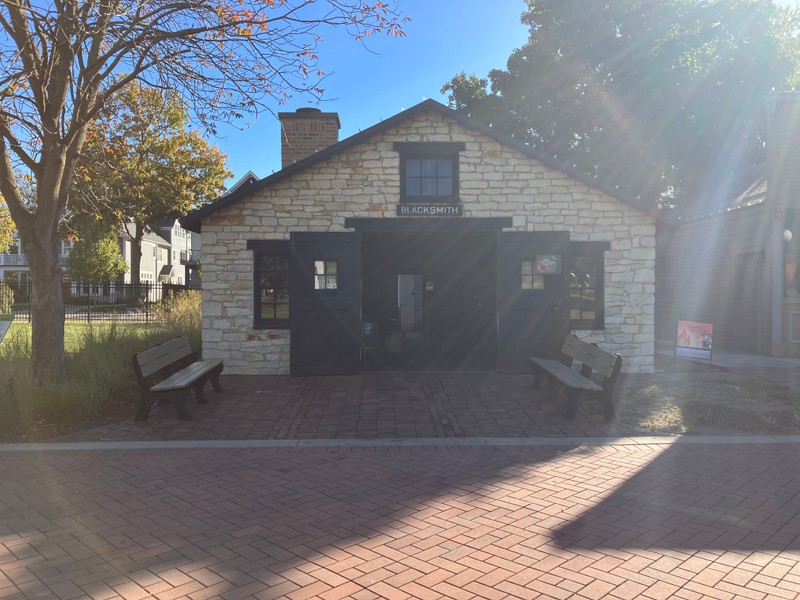Blacksmith Shop
Introduction
Author-Uploaded Audio
Listen to a narration of this entry's description by Jessica Toran.
Text-to-speech Audio
In the 1800s, no wagon train or growing town was without a blacksmith, and Naper’s Settlement was no exception. A blacksmith was the jack of all trades, the “father of craftsmen,” with the knowledge to forge iron, a black metal, to make hardware we take for granted today. It was in shops like this recreation where the blacksmith and farmer invented tools to speed up production, free up labor, assist in housework, and even help soldiers. Immigrants arriving from Europe could find work if they were smiths. In 1833, George Martin’s father sent a letter to his family back in Scotland, saying, “No person need come here if they cannot work—or bring work people with them…. Paid a Smith two dollars for putting four shoes on a horse…. Immigrants from east and Europe could find work if they knew how to smith.” It’s no coincidence that early steel plows, like those made at the Naperville Plow Works, were often the inventions of smiths. John Deere was himself a smith from Western Illinois. By the end of the nineteenth century, industry had advanced to the point that tools were being manufactured in factories and sold in hardware stores. However, this development did not mean the end of business for blacksmiths. Resourceful as ever, smiths became even more specialized, making mechanical repairs and continuing to shoe horses. The blacksmith shop here at Naper Settlement is a recreation of an 1880s Naperville shop owned by John Frederick Strohecker.
Images

Backstory and Context
Text-to-speech Audio
While in the blacksmith shop, you will see science, technology, and mathematics in action. To get the day started, the blacksmith must use a pulley system to get the bellows moving air into the forge, which starts and stokes the fire throughout the day. Once the fire reaches a glowing orange/yellow, work can begin. When the iron is placed into the fire it will start to change colors. Deep red is around 1200 degrees Fahrenheit, yellow or orange is around 2000 degrees Fahrenheit, and a bright white is around 2800 degrees Fahrenheit and iron’s melting point. Iron in the forge heats up via conduction, which means heat is passed along from the hotter end to the colder end as molecules vibrate. Once the iron reaches 2000 degrees Fahrenheit, the work can begin. Using the tools around the shop, the blacksmith passes his energy through the tool to shape the iron. Every time the iron must be reheated, the bellows pulley system is used to bring the temperature of the forge back up. To cut the iron into smaller shapes, it is placed onto a wedge and struck with a hammer in order to easily bend and snap off. Along with the basic hardware blacksmiths create, they might also make horseshoes and rings to fit onto wagon wheels. In order to make these products, the blacksmith must have proper measurements to ensure the horse or other form of transportation can properly function with the new iron fittings.
